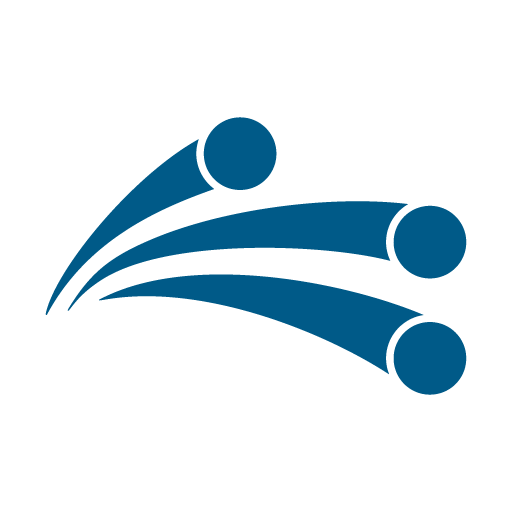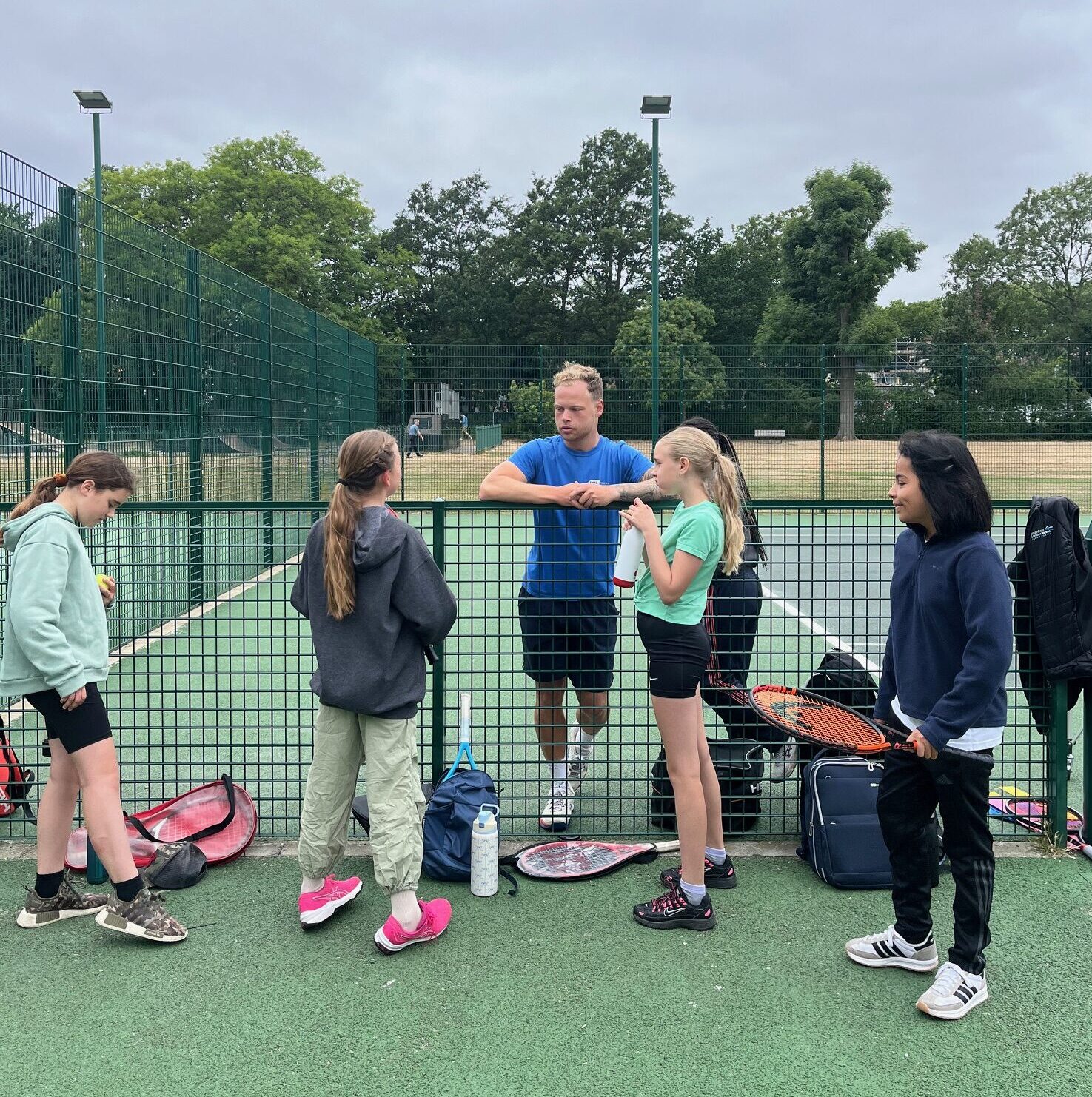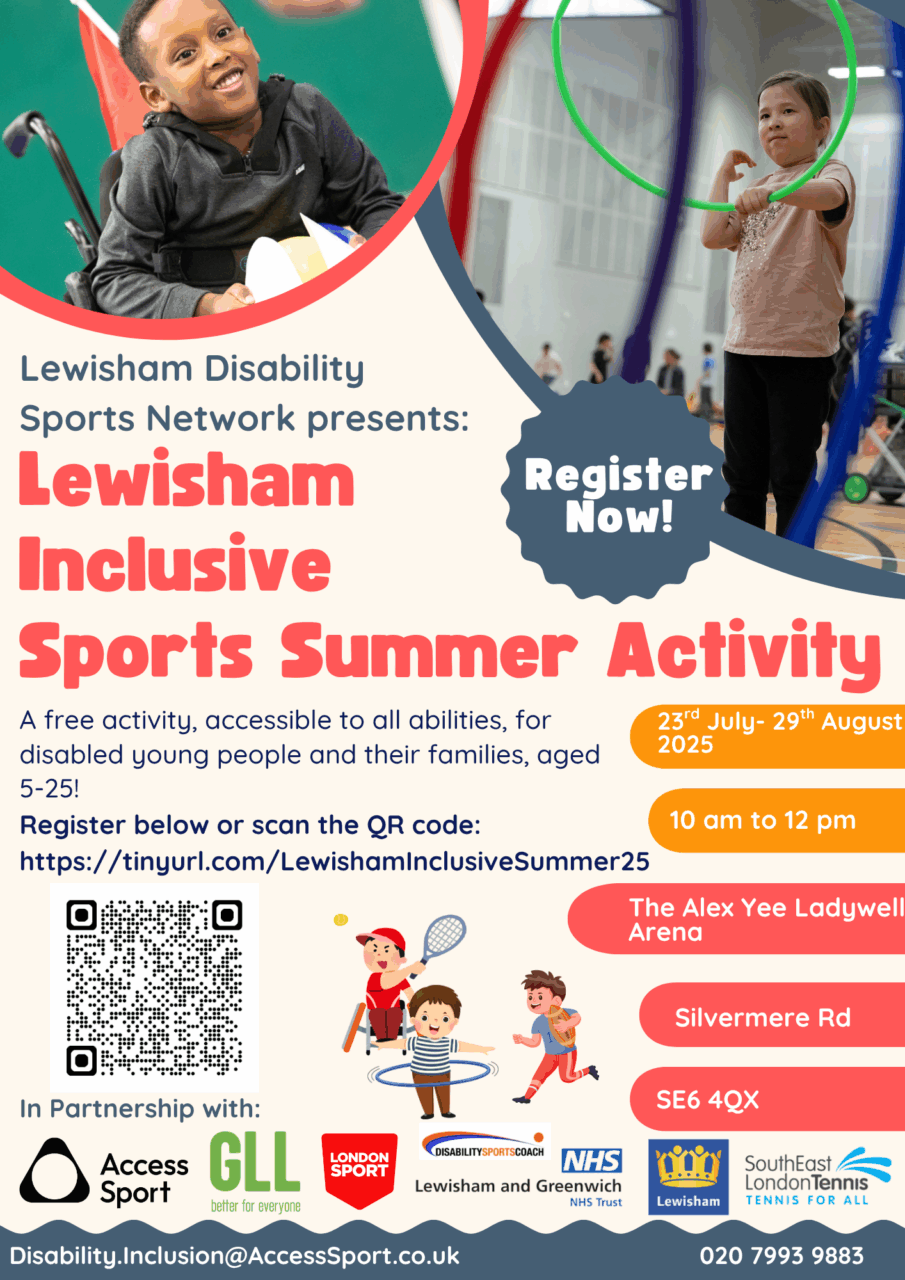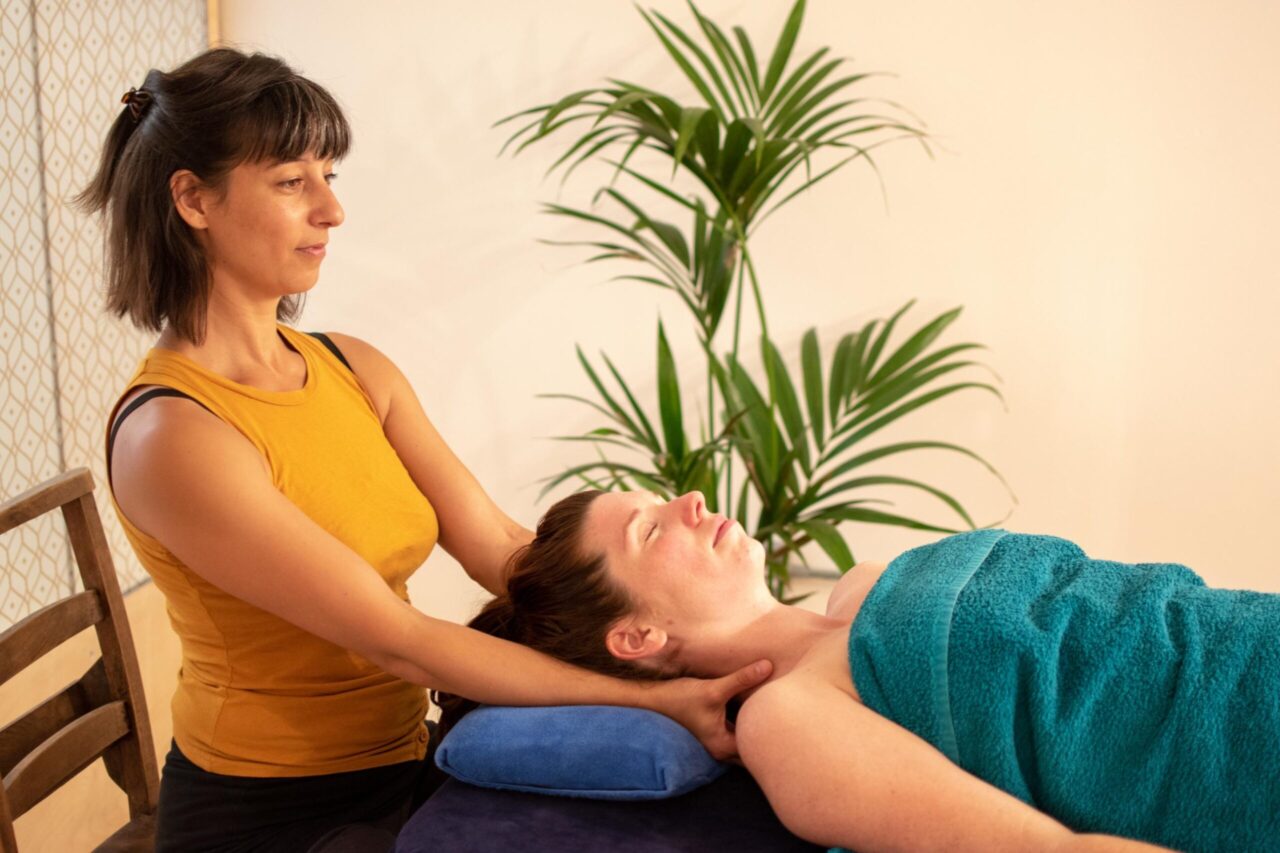Tackle tennis elbow and discover what holiday camps can do for your kids



If you thought that tennis was all about hitting a ball over a net, think again. For children of all ages, it’s about friends, family and life skills, too. As SELT’s summer holiday camp programme gets underway (book here), Charlie Giles explains how tennis has been a game-changer for her two children, Huxley (14) and Martha (12, left), who are both camp regulars.
“The funny thing about my kids is that they love tennis for totally different reasons. Hux is full of energy and is a better version of himself when he’s done loads of exercise. He loves tennis and he comes to camp because he likes doing it with his best mates and he enjoys the challenge and the competitive and sporting nature of it. Whereas Martha is very different. She really lacks confidence and isn’t very sporty naturally and she doesn’t move her body very much if given a choice. But coming to tennis has shown her that she can actually learn a sport, and she’s proud of herself. She may not be the best player in the world but she really, really enjoys it. It’s less of a social thing for her but it has really helped her confidence, and we’re very committed to tennis as a result.”
The camps work well for their different needs and character traits. You need to have some level of interest, and kids who are motivated to learn will make real progress, but you don’t have to be able to serve properly or be a complete tennis addict: it can be something that you enjoy coming along to with your mates and having a go.
Holidays are always a massive battle of screens with my kids. If they wake up and watch telly, they become apathetic and lethargic. Tennis camp is a great way to get ‘up and out’ and develop positive habits. They take up half a day, giving the kids just the right amount of structure and ensuring they get some exercise so they will be happy by the evening and knackered in a good way. In our house, after playing tennis everybody is in a good mood and that is a fact every time!”

We are delighted to announce that the Lewisham Disability Sports network, of which SELT is a key partner, has won a grant from the GLA to provide a fully inclusive SEND summer holiday programme, for children with special educational needs and disabilities, kicking off on 23 July for 6 weeks.
Sport brings huge benefits for SEND children, and their parents and carers, too. The sports involved will include tennis, athletics, cycling, dance, sensory football, hula hooping and multi sports.
The sessions will take place at the Alex Yee Ladywell Arena from 10am-12pm on the following dates:
Week 1 – Wednesday 23rd and Thursday 24th July
Week 2 – Tuesday 29th and Thursday 31st July
Week 3 – Monday 4th and Wednesday 6th August
Week 4 – Tuesday 12th and Thursday 14th August
Week 5 – Monday 18th and Thursday 21st August
Week 6 – Wednesday 27th and Friday 29th August.
There are 50 places available on each day and places can be booked here. They are free (if you would like to support us, donations will be welcomed via card machine on the day).

Lisa de Liema is a clinical massage therapist and cardio tennis regular with SELT. Ruth Jarvis grabs a quick consult.
Ruth: Hi Lisa, the outside of my right elbow has recently started to feel a bit tender after playing. Could it be tennis elbow – and what is that anyway?
Lisa: Tennis elbow is the inflammation of the tendons of the forearm extensor muscles group to the lateral epicondyle (a bony bump you can feel on the outside of your arm) to the humerus – its technical name is epicondylitis, which means inflammation of the tendons attaching the epicondyle. And yes, intermittent soreness is an early symptom, progressing to more persistent pain and weakness. You can lose strength in your hand and the ability to grip. It can be really debilitating.
Ruth: Is it something to do with the way I form my shots? Or is it just bad luck?
Lisa: It can be many things. As a practitioner I would always look at your lifestyle and how you use your hands. How much tennis do you play? Do you sit at a desk? Are you an artist, or a gardener? Maybe you’re not entirely happy in your job and there’s this pain that has developed. And when you play tennis, it gets aggravated. Stress can play a role – it’s often not just one thing; there can be multiple factors.
Ruth: How do I know when it’s time to get help?
Lisa: As soon as you start feeling niggles go and see a massage therapist or another health practitioner who may help you to relieve the pain and can advise you how to manage it.
Ruth: And what should I expect from a session with you?
Lisa: There are trigger points that refer pain into the elbow. So I would look at your neck and shoulder and the upper and lower arm and open up the hands; massage you above and below the elbow and we can palpate around the joint and with client communication we can break down scar tissue build up. There are all sorts of lovely things I could do! And I would send you away with instructions for self-massage and some stretches to do at home, especially for the extensor muscles and the flexors.
Ruth: And how about tennis?
Lisa: I don’t recommend pushing through the pain. If you don’t experience pain during play, it’s OK to keep playing, but don’t overdo it. The body needs time to restore and to rest in order for inflammation to heal.
Ruth: When can I hope to be playing as normal again?
Lisa: With lots of stretching, rest, relaxation and perhaps some more therapy, the condition will resolve, but how long it takes depends on how quickly your individual body heals.
🎾 Find out more about Lisa and book a session at lisadeliema.com. She practises at RESET at Peckham Levels, and is offering a 10% discount to all tennis players at SELT. Use the coupon TENNIS10.
Coming soon: Lisa demonstrates key exercises to help heal and prevent tennis elbow.
Laurence Garton-Adams demos the second part of his pre-play routine, designed to get you match-ready, no time wasted. You can find Part 1 here and book a private class with Laurence here.
It’s that time again: tennis’s tournament of tournaments goes again over the first two weeks of July. It’s an event of titanic scale, as the numbers reveal:
… and bring the kids!
Website by Dan Stevens